Sometimes it can feel like the world is running at double speed and there are only so many coffees that you can have to keep up. A life derived from simplicity and tranquillity seems like a lost concept in the modern technological age but a recent renaissance in a particular Dutch slow living concept has come to offer a refreshing change of pace that’s not only good for you but perhaps even for the planet as well.
From investing in solar panels for your home to burning soy candles for improved air quality and wellness, continue reading to see how embracing Hygge and the tenets of slow living can improve your life – starting from your sanctuary.
What is Hygge?
Originating from Danish culture, Hygge, pronounced hoo-gah, is an approach to life that embodies the art of creating a warm and cozy home or office environment through enjoying the simple pleasures in life. The minimalist and welcoming aesthetic has become more than just a trend as it extends into a deep connection with nature and our impact on the greater environment.
Hygge supports an approach to living that is mindful and naturally aligns with sustainable practices. In short, Hygge isn’t strictly about interior design, but rather about creating a nurturing environment with as little impact as possible. Embracing Hygge gives you the opportunity to turn your home into a sanctuary of comfort and sustainability.
Here are just some examples of how you can incorporate Hygge into your slow living lifestyle.
Design with Sustainable Materials
One of the simplest ways to embrace Hygge in your home is by using natural and organic or sustainably harvested materials when selecting your furniture, decor, curtains, throws – virtually all the elements that make up your home space.
Choosing furniture made of sustainable wood and organic cotton or linen can reduce your property’s carbon footprint from the ground-up. And your home’s carbon impact is reduced even further if you’ve been able to secure all these homewares from local suppliers.
It’s also worth mentioning that there are many different vegan and cruelty-free alternatives for a lot of the furniture and decor that you see in big showrooms that may be manufactured using animal fibres or other animal products. For instance, opting for options such as vegan leather offer a sustainable and modern style option for your furnishings.
Stimulate the Senses
Next, let’s move onto atmosphere. To create Hygge-inspired ambiance you will want to instill a sense of calm into the space through sight and smell with as minimal impact as possible. Think homemade potpourri, and perhaps even soy candles. These sustainable candles that you can make at home are a great way to create a cozy space as they provide soft warm lighting and gentle aromas.
Soy candles are actually easier to make than you might think, and can be a superb sustainable (and non-toxic) alternative to burning paraffin wax candles. And considering that soy wax also happens to have a lower melting point than traditional paraffin wax, your soy candles may actually end up lasting you a lot longer than your designer paraffin candles anyway!
Practice Mindful Consumption
Being mindful of what we consume is one of the key principles of Hygge – not only in the reduction of consumption but also in the increase of reuse and recycling of consumables. So a foundational lifestyle change you can make is practicing the art of mindful consumption.
This commitment to mindful consumption applies not only to the things we own but also in the services we consume. So evaluate the things that your household consumes when it comes to material items as well as things like energy and water usage – and ask yourself if there are opportunities in these consumption habits to further reduce your home’s impact on the environment.
For example installing solar panels on your home can have a significant effect on your property’s overall carbon impact, namely because you’re transitioning from using fossil fuels to solar, a cleaner, renewable source of energy.
And thanks to government rebates, investing in solar energy for your property can actually be pretty cost-efficient for properties of all sizes. So be sure to look into making the switch to solar for your own home.
Incorporate Indoor Plants
Solar energy fights pollution in urban areas, but there’s still the concern of air pollutants in your home. That’s where indoor plants can make a world of difference.
Indoor plants not only add a nice contrast of colour and shape to a room – they also have incredible functional effects for our household’s health and wellness. For starters, indoor plants can improve air quality by filtering out toxins and releasing oxygen. Indoor plants can also help reduce stress or cortisone levels, and caring for our green friends can also provide opportunities for mindfulness in our day-to-day lives – another cornerstone of embracing Hygge.
A key method for designing with indoor plants is to actually use a mixture of plants known for their air purifying effects (i.e. snake plants, spider plants and peace lilies). And once again, in caring for these plants, you will gain a deeper understanding and connection to nature which is key to Hygge.
Create a Sustainable Routine
The best way to maintain any kind of discipline (including wellness and sustainability shifts) is to incorporate them into our daily lives. So with that, analyse your daily and weekly routines and see if there are any aspects that could be tweaked slightly to have a lasting impact long term.
These changes don’t need to be drastic and should always add a sense of simplicity to your life. For instance, you could change a short drive to a relaxing walk, take your own bags to the supermarket, start composting kitchen waste or change disposable products to eco-friendly alternatives. Small things done regularly can have a large impact.
Declutter your Space
A cluttered space will lead to a cluttered mind. One of the best things you can do for your mental health is to simplify your space by removing any unnecessary items that take up physical and mental space.
A great place to start here is with your wardrobe. Check out our guide to designing a super sustainable capsule wardrobe to help kickstart your fashion decluttering process. With just a little intelligent strategising, you should be able to maximise your wardrobe whilst simultaneously embracing a healthier, more sustainable (and more cost-effective) minimalist approach to fashion consumption.
Shop with Ethical Brands
Whether you’re shopping for a big night out or a comfy night in, shopping with companies that use sustainably and ethically sourced materials is a great way to reduce your carbon footprint.
We recommend swapping out all your synthetic fibres in your undies, activewear and basics first. Natural cottons free from dyes and chemical treatments have a much lower carbon footprint than synthetic fibres. Natural cotton or even bamboo undies also make for far more comfier basics than synthetic fibres!
Similarly, sustainable activewear made from recycled fibres is one of the most sustainable ways to make clothes, as these processes remove the excess fabric waste that would normally be a by-product of the industry.
Switching Lanes to Slow Living over the Long Term
With all these tips shared and your journey towards slow living commencing, let us leave you with one final tip: embracing Hygge doesn’t happen overnight. The transition into slow living can take time, depending on how many of your practices you may need to revisit. So let yourself proceed mindfully and purposefully to ensure that the changes you make now can be sustained over the long term.


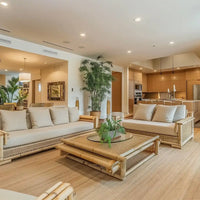
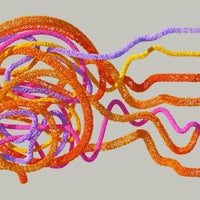
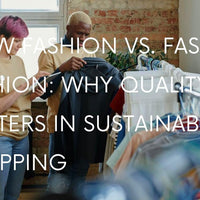
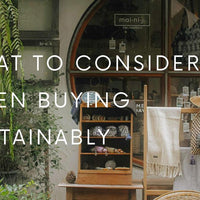
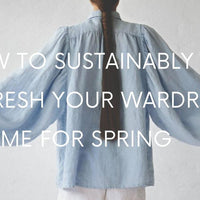

0 comments